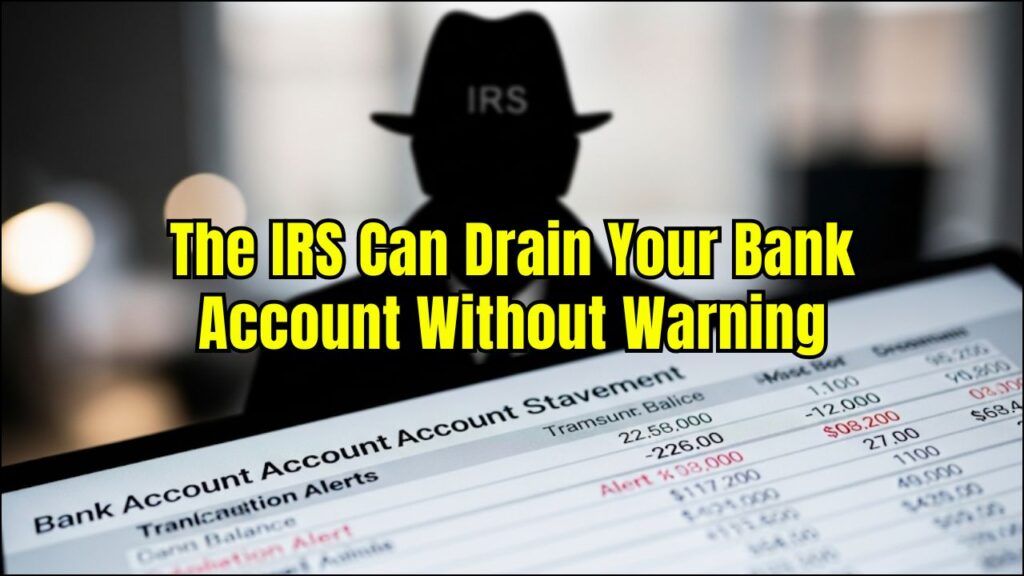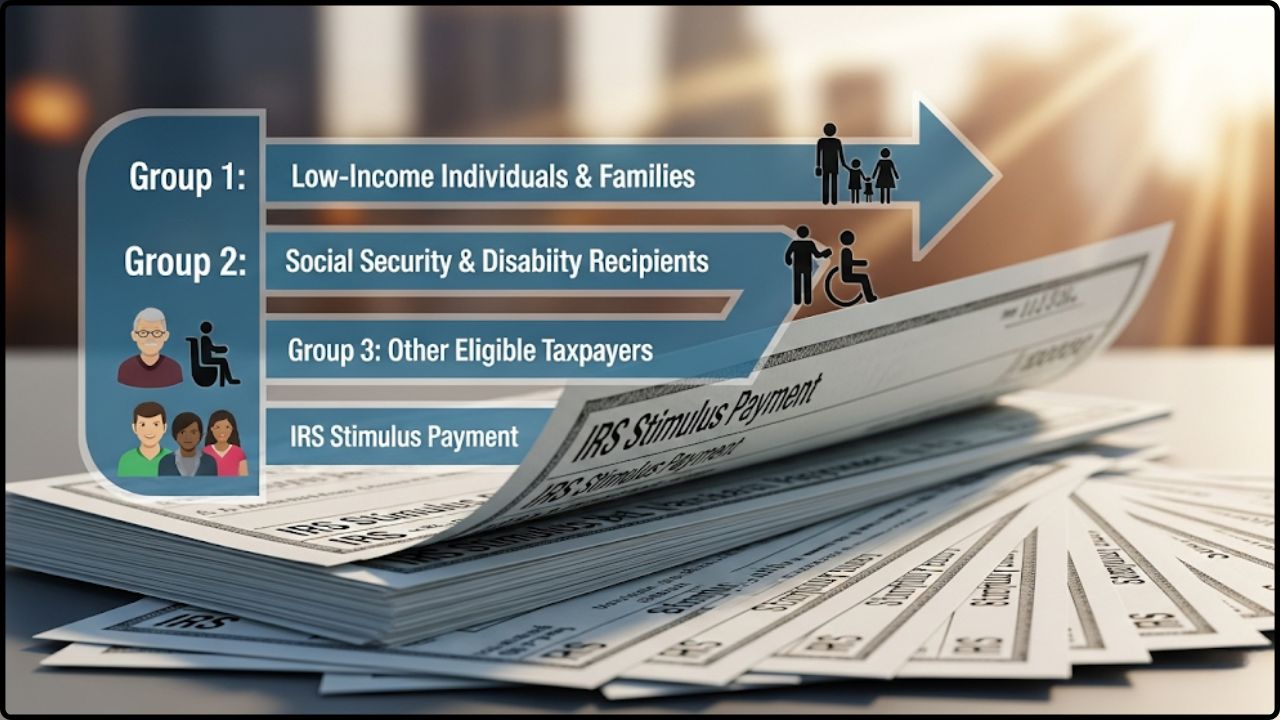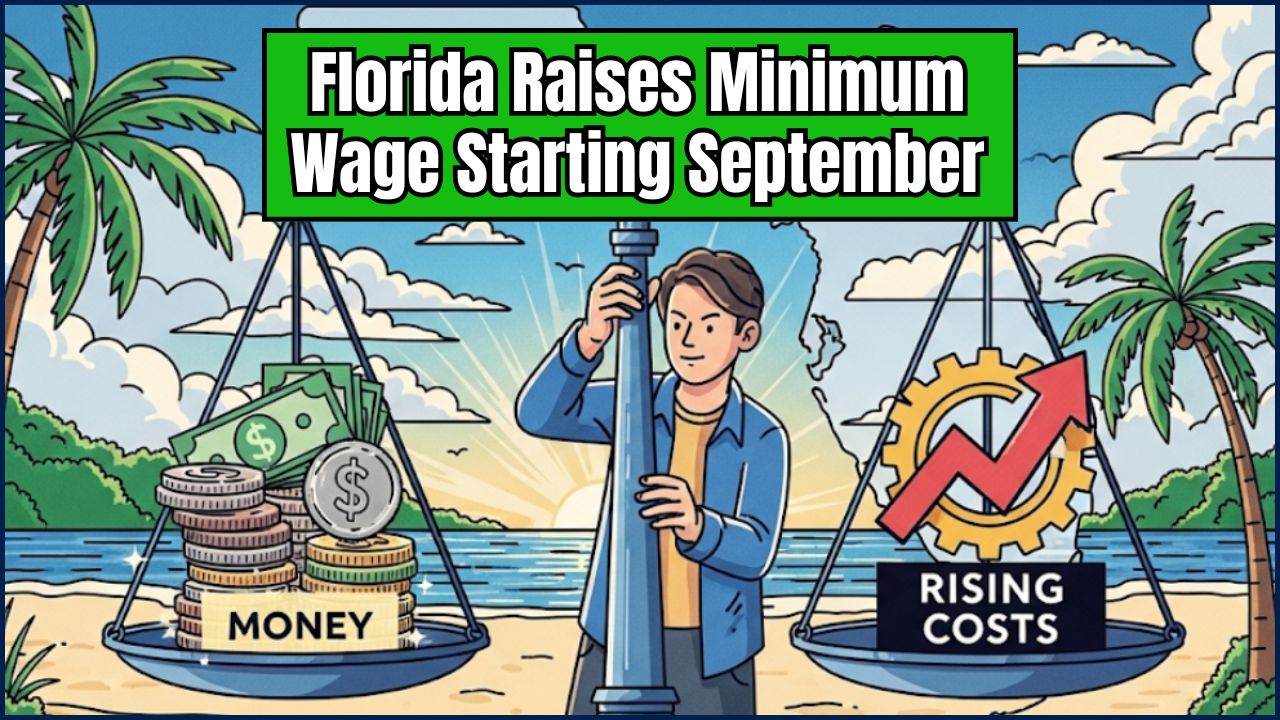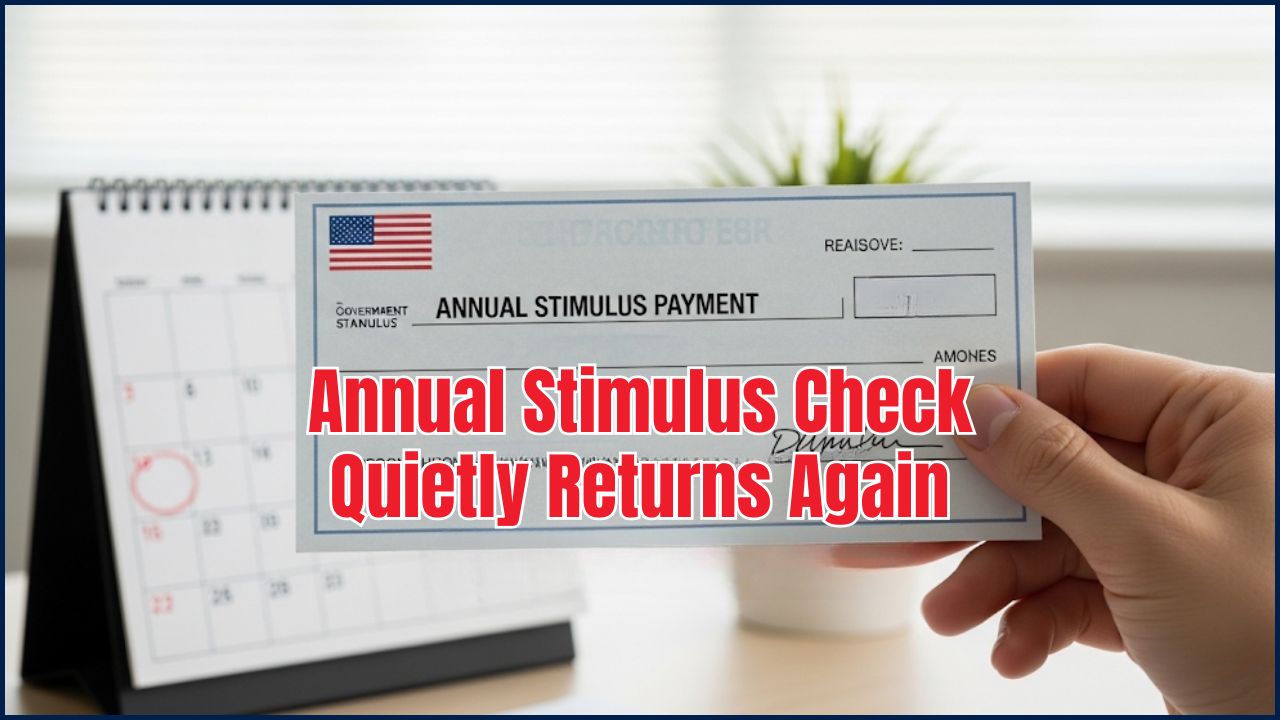When it comes to dealing with the IRS, many taxpayers are unaware of the real threat of their bank accounts being seized for unpaid taxes. The thought of the IRS taking your hard-earned money from your bank account without warning might seem like a nightmare. But before jumping into panic mode, it’s important to understand that the IRS must follow a legal process, and there are ways to prevent it from ever happening.

In this article, we’ll walk you through how the IRS collects unpaid taxes, the step-by-step process leading to a bank levy, and most importantly, how you can avoid or stop this from happening. We’ll also help you understand common IRS notices, what to do if you receive them, and offer practical advice to keep your financial situation safe. With this information, you’ll be better prepared to handle any communication from the IRS.
IRS Can Drain Your Bank Account Without Warning
| Key Points | Details |
|---|---|
| What is an IRS Levy? | A legal action where the IRS can seize assets, including money from your bank account, to pay your tax debts. |
| IRS Collection Process | The IRS must issue multiple notices and wait for your response before issuing a levy. |
| Protecting Your Bank Account | You can avoid an IRS levy by paying the debt, setting up a payment plan, or requesting a hearing. |
| Real-Life Case Study | Example of a taxpayer who successfully avoided a bank levy by negotiating a payment plan with the IRS. |
| Dealing with IRS Officers | Tips on how to stay calm and manage interactions with IRS officers if they visit your home or workplace. |
| Taxpayer Rights | Understanding your rights when dealing with the IRS, including the right to appeal or request a Collection Due Process (CDP) hearing. |
| Official IRS Resources | IRS Official Website on Levies |
The IRS does have the power to drain your bank account if you owe taxes, but they can’t do it without warning. If you owe money, the IRS will follow a clear process that gives you multiple chances to resolve the issue. By understanding how the IRS works and taking action quickly, you can prevent a levy from happening. Whether you pay the debt in full, set up a payment plan, or file for an Offer in Compromise, there are ways to avoid serious financial consequences.
What is an IRS Levy?
An IRS levy is a legal process where the IRS can take money directly from your bank account, paycheck, or other assets to satisfy a tax debt. This is the IRS’s way of collecting taxes you owe and failing to respond to earlier notices or arrangements. While it’s one of the most powerful tools the IRS has, a levy can be avoided by paying your taxes, setting up a payment plan, or negotiating other options.
But don’t worry—an IRS levy doesn’t happen overnight. It’s a step-by-step process that allows you multiple chances to settle the debt before the IRS takes any action. Let’s take a deeper dive into how it works.
Step-by-Step Breakdown of the IRS Levy Process
1. You Owe Taxes
It all begins when you owe money to the IRS, whether it’s from unpaid income taxes, self-employment taxes, or other obligations. The IRS typically sends you a notice and bill outlining what you owe. If you ignore it, they’ll start the process of pursuing payment.
2. IRS Sends Multiple Notices
Before they issue a levy, the IRS will send multiple notices, giving you several chances to resolve the issue. These notices will outline how much you owe, including any penalties or interest.
- CP14 Notice: The IRS sends this notice when you owe taxes. It’s the first step in their collection process.
- CP504 Notice: This is the most crucial warning. It’s the Final Notice of Intent to Levy, which warns you that the IRS is about to seize your assets if you don’t act within 30 days.
3. Final Notice of Intent to Levy
This is the notice that sends chills down your spine. If you’ve received a CP504 Notice, it means the IRS is ready to act. At least 30 days before taking action, the IRS will send this notice, giving you a last opportunity to respond.
4. Bank Levy Issued
If you’ve ignored the notices or failed to resolve the issue, the IRS can issue a levy. Your bank will freeze your account for 21 days during which you can act to resolve the issue. After that, the bank will send the funds to the IRS to pay off your tax debt.
How to Prevent an IRS Levy on Your Bank Account
1. Pay Your Debt
The most straightforward way to avoid a levy is to pay your debt in full. If this is possible, do it quickly to prevent further action.
2. Set Up an Installment Agreement
If you can’t pay all at once, ask the IRS to set up an installment agreement. This allows you to pay your debt in monthly payments, and it can be a great way to stop a levy from happening.
3. Request a Collection Due Process (CDP) Hearing
If you receive a CP504 notice, you have the right to request a Collection Due Process (CDP) hearing. This gives you an opportunity to present your case to an IRS officer and may help delay or stop the levy from proceeding.
4. File an Offer in Compromise
If paying the full amount is impossible, you may qualify for an Offer in Compromise (OIC). This allows you to settle your tax debt for less than what you owe, but you must meet certain criteria.
5. Seek Professional Help
Tax issues can be complicated, and it’s okay to ask for help. Consider hiring a tax professional such as a CPA or tax attorney to negotiate on your behalf. They can help you navigate the IRS system and avoid serious consequences.
Real-Life Case Study: A Taxpayer’s Story
Let’s take the example of “Sarah,” a small business owner who found herself in a tough spot. Sarah had fallen behind on her self-employment taxes and received multiple notices from the IRS. When she received the CP504 Notice, she knew she needed to act fast. Sarah wasn’t able to pay the full amount, but with the help of a tax attorney, she successfully set up a payment plan with the IRS. By making regular payments, Sarah avoided a bank levy and was able to get back on track.
What to Do if the IRS Has Already Issued a Levy
If the IRS has already issued a levy on your bank account, don’t panic! You still have options:
- Request a Levy Release: If the levy is causing immediate financial hardship, you can request a levy release. You may need to prove that the levy is harming your ability to meet basic living expenses.
- Appeal the Levy: If you believe the levy was issued in error or unfairly, you can appeal the decision.
- Negotiate: Work with the IRS to settle the debt, either by negotiating an installment agreement or filing an Offer in Compromise.
Dealing with IRS Officers: How to Stay Calm
In rare cases, an IRS officer might show up at your door. While this can be intimidating, it’s important to remember that you have rights. IRS agents are required to follow a set of rules when visiting taxpayers. Here are a few tips:
- Stay calm: You’re not required to let an IRS agent into your home unless they have a warrant.
- Get their information: Ask for their name, title, and contact information.
- Consult a professional: It’s always a good idea to have a tax professional handle any in-person meetings with IRS agents.
Your Taxpayer Rights
As a taxpayer, you have rights. The IRS cannot just come in and take your money without giving you a chance to resolve the issue. Key rights include:
- The right to be informed: The IRS must clearly communicate what you owe and how to resolve the issue.
- The right to challenge the IRS: You can appeal IRS decisions and request a hearing if you disagree with their actions.
- The right to confidentiality: The IRS must keep your personal information private unless there’s a legal reason to share it.






